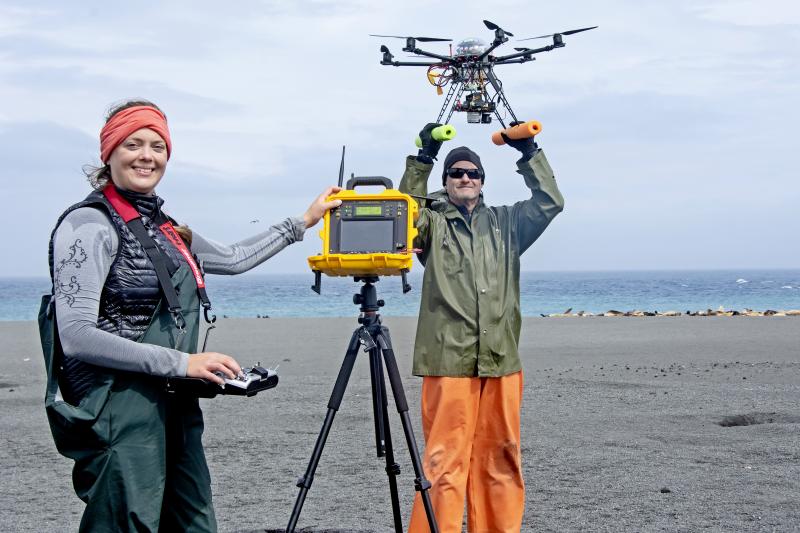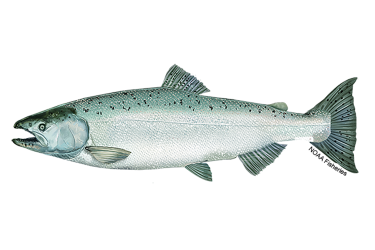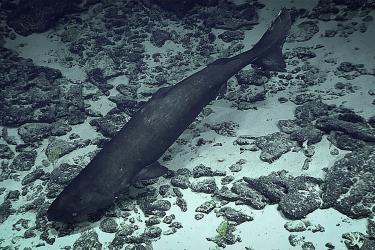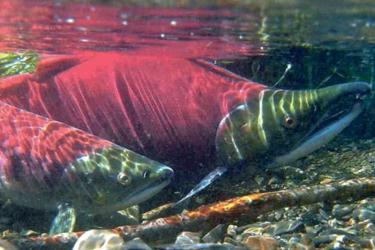In summer 2019, a team of NOAA Fisheries scientists from the Alaska Fisheries Science Center headed to Bogoslof, a remote island in Alaska’s Aleutian Island’s chain. Bogoslof is an active volcano that erupted 52 times over the span of nine months, with the final eruption occurring in August 2017. It is also the site of a growing population of northern fur seals.
Scientists conducted a count of northern fur seal pups to learn more about the population post-eruption. They also tested a new uncrewed aircraft system (UAS). They hope to further test the system this year in the Pribilof Islands, a group of islands in the Bering Sea. The UAS system could revolutionize the way population abundance is estimated while helping scientists better understand why the Pribilof Island population is declining.
UAS pilot and biologist Katie Sweeney is eager to test the latest innovations in the technology. Sweeney has been a certified FAA Remote Pilot since 2013. Being a Remote Pilot requires recertification every 2 years, manufacturer training, and maintaining proficiency over time.
Since 2017, Sweeney has been working with GeoThinkTank and others to develop a drone system. It will be able to more accurately detect small black fur seal pups against the black volcanic rock background of the Pribilof Islands.
“We identified the optimal sensor and how to customize it to detect fur seals,” she said. “This technology goes way beyond the capabilities of standard point-and-shoot cameras.”
Traditional Survey Method
For decades, fur seal surveys were done with a traditional mark-recapture method called shearing. The pups are then counted as one step in the method of determining whether the fur seal population is growing or declining.
“We were excited to see in 2019, that pup production on Bogoslof was almost 30 percent higher than our last survey estimate in 2015. Unfortunately, not all populations of fur seals are growing. In the nearby Pribilof Islands in 2018 we observed the lowest pup production in more than 100 years.”
Regular surveys of populations are essential for monitoring, studying, and managing wildlife. This is especially true for recovery of those sensitive and depleted populations, such as northern fur seals on the Pribilof Islands.
“UAS technology has the potential to help us do our jobs better and more safely,” she said.
UAS Efficiencies
While this technology cannot collect important biological data, it can collect useful photographic images, and may significantly reduce field survey costs. Scientists estimate these savings could be as much as 75 percent because they will need fewer people to complete the research. Drones can also reduce the inherent risk to personnel who have to work with wild animals while minimizing disturbance to the fur seals.
Over the next several months, Sweeney and other NOAA Fisheries scientists will continue to work with industry partners to build the UAS technology. They hope to get it in the air on the Pribilof Islands next summer. Once the team collects enough imagery, the next step will be to work with experts to use artificial intelligence (AI) to automate image processing and analysis. This feat would be near impossible for humans to do in a timely manner. Sweeney is currently working with AI experts to develop these capabilities for processing Steller sea lion imagery collected annually for abundance surveys.






